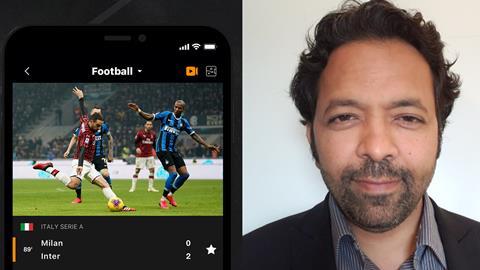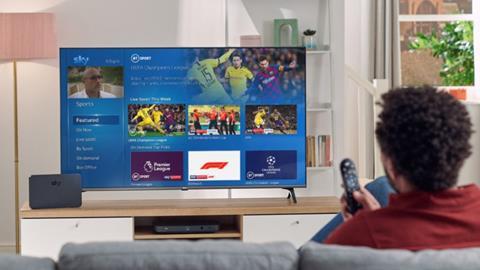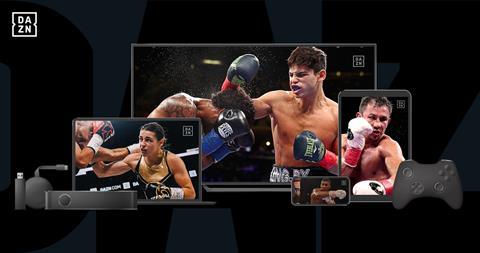Dheeraj Ravula, head of product for D2C video solutions, MediaKind, takes us through the growing opportunities in D2C/OTT

For sports rights-holders, leagues and teams looking to future proof their business models amid turbulent industry disruption, one thing is clear; having direct relationships with fans is critical. Sports rights-holders now have a renewed opportunity to offer fans compelling live content via a medium that opens up a two-way relationship. This approach helps provide a richer experience for the viewer and essential fan data and potential revenue for the sports body.
As a result of this, rights-holders are finding fertile ground in direct-to-consumer (D2C) OTT services, a market that looks set to grow exponentially in 2021 and beyond.
New Opportunities for Rights-Holders
The market for sports rights has become increasingly complex, and the need for alternative revenue streams is clear. Streaming has evolved into an entertainment mainstay for live sports, and as a result, the way fans enjoy and engage with sports content is being redefined.
Following a temporary live sports hiatus for much of 2020, many leagues are now resuming live games, even if in empty stadiums. While this is good news for the value of sports rights, Deloitte expects NFL teams to lose $5.5 billion of stadium revenue this year, primarily in the form of ticket sales, concessions, sponsorships, and sales of team merchandise.

The re-opening of some stadiums and arenas will help to compensate for this loss partially. Still, the truth of the situation is that rights-holders must look to engage their audiences beyond brick and mortar, embrace innovative new technologies, and evolve their business models to reach their digital audiences. Investing in direct-to-consumer (D2C) services is now a straightforward solution to overcome these challenges and to grow future business models towards consumers’ needs.
Entering the Streaming Age
The rewards of a successful D2C service can be seen in other segments of the entertainment industry; Disney, for example, has recently re-aligned its business models to focus on streaming. Launching its streaming service, Disney+, in the UK in March 2020, it has already earned a seat at the D2C table, becoming the nation’s third-biggest streaming platform with a 16.8% market share.
Sports rights-holders have the same opportunity to capitalize on this trend, yet the take-up has been significantly slower. Instead, the market more closely resembles pay-TV in the early 1990s.
A recent report conducted by MediaKind and The Sports Playmaker found that 70% of sports rights-holders currently operate a subscription D2C offering of some kind, with varying degrees of content offerings and monetization approaches. These include annual (60%), monthly (58%), or multi-game options, individual purchases (18%), and even packages covering small portions of a game.

These models each present unique challenges, mainly to do with scale and sharp peaks in audience viewing. Yet, with OTT technology becoming prevalent in entertainment viewing, the sports market has reached an inflection point. The time is now for rights-holders to step their game up.
Jumping Hurdles
A fault in the feed during a high-profile live game is enough to deter some fans and can damage a league’s brand image. As a result, robustness, quality, and cost savings have become prerequisites for any D2C offering.
The bi-directional nature of internet delivery allows for a richer and more immersive experience for fans than is possible with linear broadcast coverage.

Additionally, it enables rights-holders to gather valuable insights into viewing behavior. The monetization potential here is ripe yet remains mostly untapped. For example, the same MediaKind report found that just 8% of sports rights-holders incorporate advertising in some way on their OTT service. This is a missed opportunity, as the revenue potential for personalized ad-insertion is likely to surpass the revenue from subscriptions in the coming years.
Tapping into New Revenue Streams
Sports rights-holders’ reliance on pay-TV income has become uncomfortably clear in the wake of the COVID-19 pandemic. According to Two Circles, pay-TV accounted for 71.4% of the $48.2 billion spent on sports media rights in 2019, with this revenue expected to fall to $32.1 billion in 2020. Furthermore, as consumers become less enticed by pay-TV service bundles, the time is now for sports rights-holders to reevaluate their market approach.
OTT opens up new prospects to engage fans in a way that traditional broadcast cannot cater for. It puts the fan in control of the experience.

The growth of D2C is not to mark the end of the stadium experience; this will always remain valuable to fans. The opportunity here is understanding the growing value of the fan outside the stadium. The percentage of rights-holders that currently operate a D2C OTT service with rich content remains small. But all rights-holders, even those without their own platform, are exploring the commercial possibilities that emerge with D2C OTT.

Dheeraj Ravula is head of product for D2C video solutions at MediaKind





No comments yet